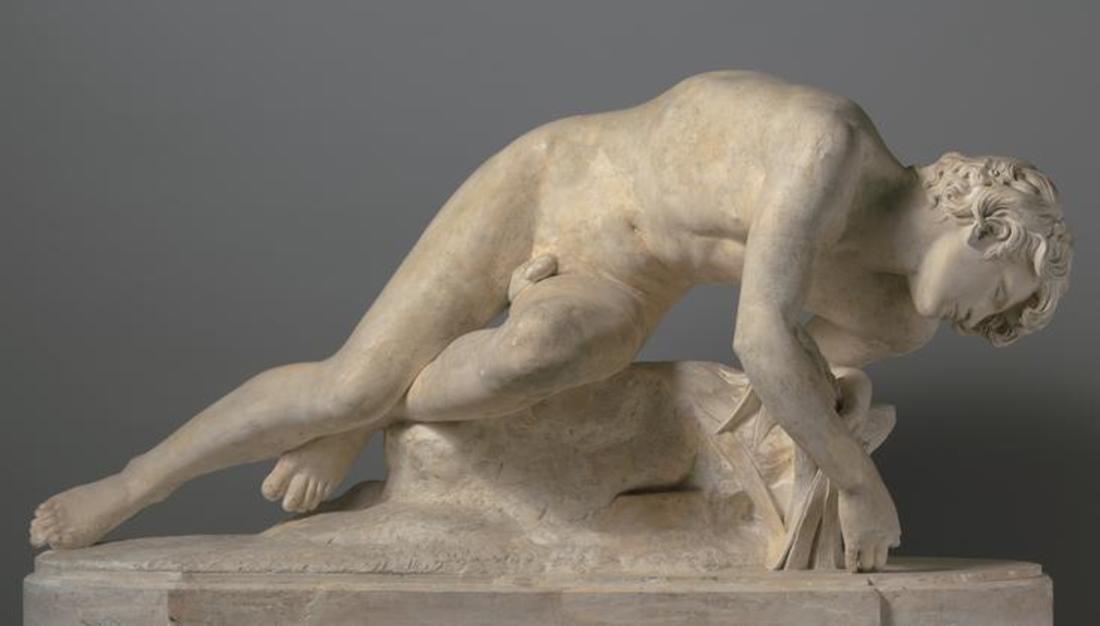This plaster sculpture was designed by Ernest Hiolle during his stay at the Villa Medici. It represents a young boy, Narcissus, whose story is told in the third book of Ovid's "Metamorphoses".
Though he was just a child, a soothsayer predicted to Narcissus' family that he would live a long life as long as he did not see his own reflection. His family therefore hid all the mirrors in the house. As a teen, Narcissus became an arrogant and proud boy, scorning his many would-be suitors.
One day, while hunting in the forest, Narcissus approached a spring. He leant over the water and saw a beautiful young man, with whom he immediately fell in love.
It was, in fact, his own reflection. Narcissus tried to grab him and kiss him, but he could not. Instead, he withered away and died of a broken heart. The poem ends with the disappearance of Narcissus' body and the appearance of a flower in its place, with a yellow centre and white petals: the narcissus.
Hiolle represents the young man beside the water, admiring his reflection. His right hand caresses the surface, as if to brush his lover's cheek. His body is languid, in a graceful pose. Narcissus' face is that of a flawless ephebe. A single detail suggests the young man's gruesome fate; a handful of narcissuses in his hair …
Detail: photo of the narcissuses

This plaster sculpture was designed by Ernest Hiolle during his stay at the Villa Medici. It represents a young boy, Narcissus, whose story is told in the third book of Ovid's "Metamorphoses".
Though he was just a child, a soothsayer predicted to Narcissus' family that he would live a long life as long as he did not see his own reflection. His family therefore hid all the mirrors in the house. As a teen, Narcissus became an arrogant and proud boy, scorning his many would-be suitors.
One day, while hunting in the forest, Narcissus approached a spring. He leant over the water and saw a beautiful young man, with whom he immediately fell in love.
It was, in fact, his own reflection. Narcissus tried to grab him and kiss him, but he could not. Instead, he withered away and died of a broken heart. The poem ends with the disappearance of Narcissus' body and the appearance of a flower in its place, with a yellow centre and white petals: the narcissus.
Hiolle represents the young man beside the water, admiring his reflection. His right hand caresses the surface, as if to brush his lover's cheek. His body is languid, in a graceful pose. Narcissus' face is that of a flawless ephebe. A single detail suggests the young man's gruesome fate; a handful of narcissuses in his hair …
Detail: photo of the narcissuses